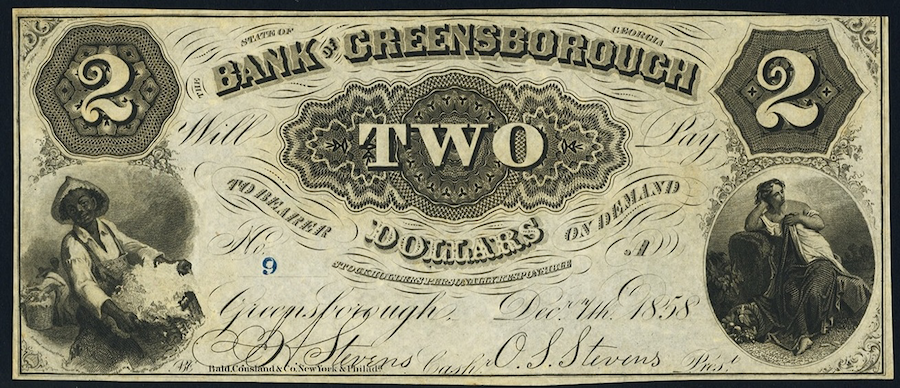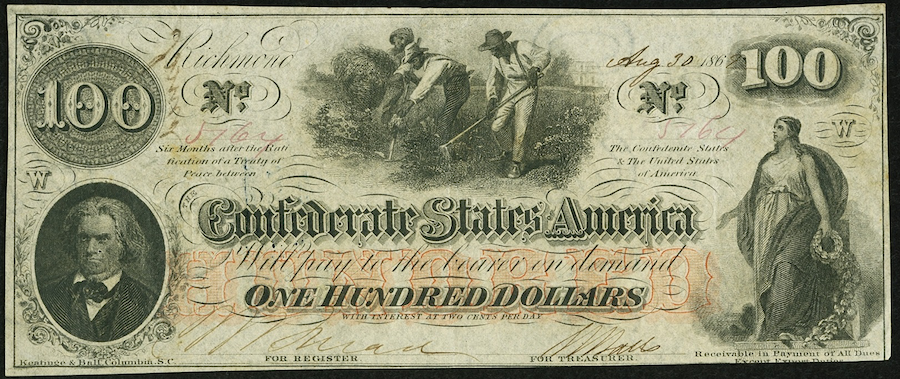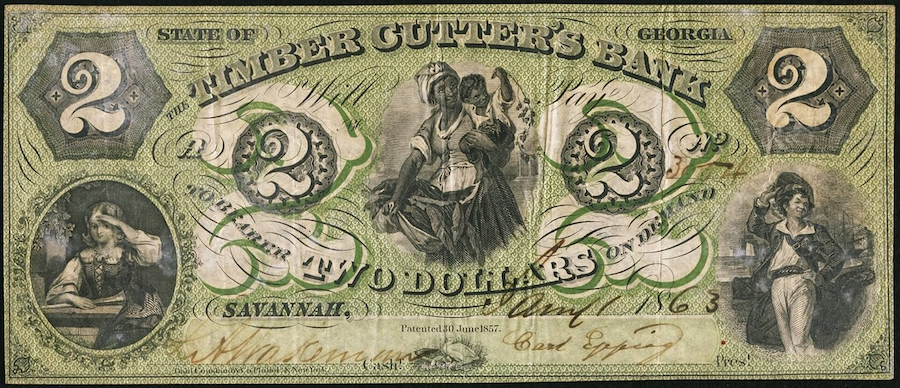Will Trump Upend the Plan to Replace Jackson with Tubman on the Front of the $20 Bill?

In the aftermath of the violent white supremacist rally in Charlottesville, Virginia, President Trump posited a moral equivalence between those who marched under Nazi and Confederate flags and those who protested their parade of bigotry. He also endorsed the ostensible cause that drew the former to Charlottesville: preventing the removal of a bronze equestrian statue of Gen. Robert E. Lee. At his press conference in the lobby of Trump Tower, and later on Twitter, Trump argued that the removal of “beautiful” Confederate statues and monuments was a “foolish” attempt to change history—one that would threaten monuments to other great American slaveholders such as George Washington and Thomas Jefferson. The fact that Washington, Jefferson, and other founding fathers considered slavery a moral and philosophical wrong, despite being slaveholders themselves, and fought a war against Great Britain to advance the cause of human liberty, while Confederate leaders insisted that slavery was a blessing and fought a war against the United States to perpetuate the institution is a distinction that seems to be lost on the president.
Since taking office, Trump has sought to place himself among the great men of the past. One of his first acts as president was to remove all landscapes and other paintings depicting American life from the Oval Office and replace them with portraits of Thomas Jefferson, Alexander Hamilton, and Andrew Jackson. (Washington and Lincoln were already there and remain in place.) Given Jackson’s reputation as a slaveholder and the architect of Indian removal, his presence near the Resolute Desk, where he often appears in photographs with Trump, has been especially controversial. Yet Jackson is the historical figure with whom the president seems most eager to identify. He notes that Jackson was a “people’s president” who successfully fought the nation’s financial and political elites. Not surprisingly, he fails to note that Jackson thought the people, and not the Electoral College, should elect the nation’s chief executive.
While Trump has no say in the fate of monuments located in city parks or on courthouse grounds, he does have the power to save the most famous monument to the seventh president, one that was slated for removal by the Obama administration last year: Jackson’s portrait on the $20 bill.
On April 20, 2016, Treasury Secretary Jacob Lew announced major design changes to the $20, $10, and $5 notes. While Hamilton will remain on the front of the $10, the back will honor leaders in the movement for women’s suffrage—Lucretia Mott, Elizabeth Cady Stanton, Alice Paul, Sojourner Truth, and Susan B. Anthony. Lincoln will likewise remain on the front of the $5, while the back will celebrate the role of the Lincoln Memorial in the Civil Rights Movement. Jackson, however, will move to the White House on the back of the $20 while the famous champion of human rights, Harriet Tubman, takes his place on the front.
Public opposition to the proposed changes was minimal. However, support was not universal within the Republican Party. Rep. Steve King (R-Iowa), who has weathered criticism for displaying a Confederate flag on his desk and for insisting that slavery played only “a small part” in the coming of the Civil War, introduced an amendment to a bill funding the Treasury Department that would have prevented Lew from replacing Jackson on the $20. The decision to place Tubman on the $20, King told Politico, was “divisive” and “racist,” part of President Obama’s effort “to do everything he can think of to upset this society and this civilization.” Although Republicans on the House Rules Committee quashed King’s amendment, Trump, expressing the same aversion to historical reassessment he would later extend to Lee, denounced the “pure political correctness” that threatened to obscure Jackson’s “great history.” It is “very rough,” he concluded, “when you take somebody off the bill.” Nevertheless, he quickly added that Tubman was “fantastic” and suggested that she could take Jefferson’s place on the rarely seen $2 bill.
Trump’s opposition to Jackson’s removal from one of the most common currency denominations demonstrates his awareness of the fact that there is more to money than its face value. We use it to celebrate institutions, leaders, and ideas. Contrary to some media reports, Tubman will not be the first African-American to appear on American paper money. Between the Revolution and the Civil War the federal government issued coins, but not currency. Notes were, however, printed by individual banks. By the eve of the Civil War, roughly seven thousand different banknote varieties circulated in the United States. Despite the potential for local variety, northerners and southerners employed many of the same vignettes on their currency. While many of these state-chartered banks chose to honor local leaders and historical figures, they frequently chose likenesses of the founding fathers, as well as images of shipping, generic pastoral scenes, and depictions of women that occasionally bordered on the salacious.
Southern currency differed from northern currency in only one respect: Southern notes often displayed images of slaves. Considering the enormous monetary value of the institution, it is perhaps not surprising that southerners included illustrations of slavery on their money. Representing nearly $3 billion, the investment in slaves was more than the national investment in railroads and manufacturing combined.

The use of slave vignettes also demonstrates slavery’s importance to southern society as a whole. By displaying images of happy, hardworking bondsmen, southerners attempted to validate their belief that African bondage was a blessing to blacks and whites alike. They claimed to provide their workers with all the necessities of life, in sickness and in health, in infancy and in old age. One popular vignette depicts slaves cheerfully riding on a wagon loaded with cotton. Another shows an idyllic depiction of a slave mother and her child, while another portrays a field hand with a basket of cotton and a very distinct smile on his face.
After the Southern states seceded, the new Confederate government demonstrated its eagerness to celebrate the institution of slavery on its currency. Contrary to the views of Rep. King, and all those who deny that the South seceded to defend slavery, these images, taken with the words of the secessionists themselves, illustrate the fact that slavery was the essential cause of the war. Of the forty-one note types issued in Montgomery and Richmond from May 1861 to September 1862, seven (17 percent) were adorned with slaves. (In late 1862, the government settled on a single printing firm, which finally produced a standard currency, and which rejected any allegorical or slavery-related images in favor of Confederate officials and state capitol buildings.)
Given the need to prevent counterfeiting, changing our currency is a slow and painstaking process. The concept designs for the new $5, $10, and $20 bills are not scheduled to be released until 2020. In the meantime, the secretary of the Treasury, now Steven Mnuchin, is responsible for any artistic changes to our nation’s money. Will Trump permit him to acquiesce in the Obama administration’s “very rough” plans? Despite a brief period of goodwill during the transition, Trump has treated the first African-American president with relentless hostility, and has demonstrated a determination to dismantle his predecessor’s legacy, regardless of the consequences. This hostility, along with his devotion to a static interpretation of American history, could ultimately force Tubman to the back of the bill—or derail Secretary Lew’s plan to commemorate women and African-Americans altogether. In fact, in an interview with CNBC on August 31, Mnuchin declined to endorse Jackson’s removal from the $20. Dismissing the issue as unimportant, he nonetheless echoed Trump’s aversion to change. “People have been on the bills for a long period of time,” he blandly observed.
It now seems highly likely that the proslavery propaganda on Civil War era southern banknotes like the one below will continue to display the only images of African-Americans in our numismatic history.
